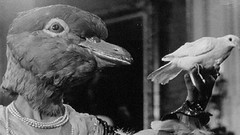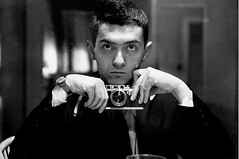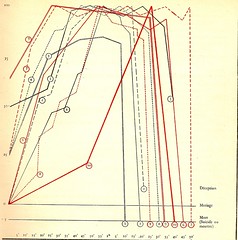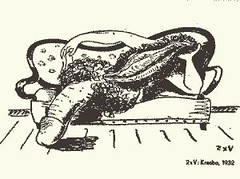Twenty three years ago, the French film The Beast premiered in France.
Sirpa Lane in
The Beast (La bête) (1975) – Walerian Borowczyk [Amazon.com] [UK]
La Bête (Eng: The Beast) is a 1975 film written and directed by Walerian Borowczyk, starring Sirpa Lane, based on Lokis, a story by Prosper Mérimée. The film (originally conceived in 1972 as a film on its own, but then in 1974 as the fifth story in Contes immoraux) belonged to his later work, which was seen by many as a decline in the director’s career after Dzieje grzechu, except in France, where it was hailed by nobrow critics such as Ado Kyrou.
Here is some shaky Youtube footage:
[Youtube=http://www.youtube.com/watch?v=RV0xScJuYXc]
The music consists of harpsichord pieces by Domenico Scarlatti.
Music in Borowczyk films usually draws from the high art canon of classical music, for example, he uses Mendelssohn in The Story of Sin, Handel in Goto, Island of Love and Domenico Scarlatti in La Bête.
Incidentally, the term “classical music” did not appear until the early 19th century, in an attempt to “canonize” the period from Johann Sebastian Bach to Beethoven as a golden age. The earliest reference to “classical music” recorded by the Oxford English Dictionary is from about 1836.
With regards to the title quote and the strange vocabulary of eroticism, Tim Lucas [1] gives the top 10 dialog lines from Massimo Dallamano‘s Venus in Furs (starring Laura Antonelli).
At ten is “I must resign myself to being normal.”























